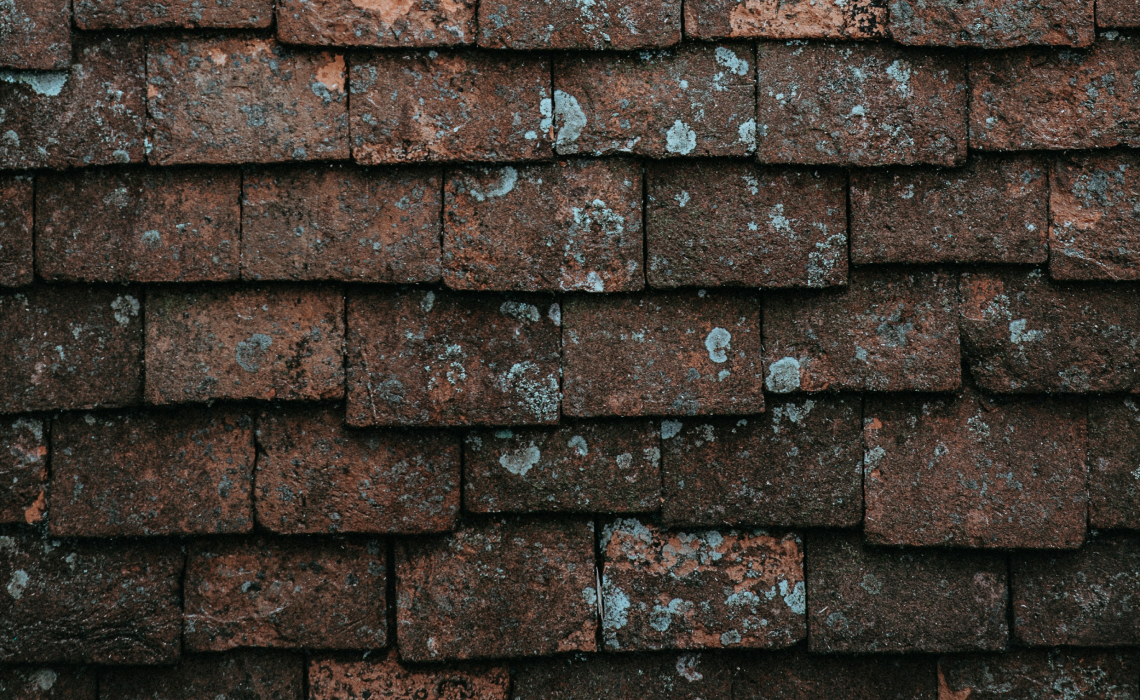What Went Wrong in Surfside? A Risk Engineer’s Perspective
What Went Wrong in Surfside? A Risk Engineer’s Perspective
Archipelago co-founder and CEO, Hemant Shah, interviews Erin Ashley, Director of Risk Engineering, on the condominium collapse in Surfside, Florida. Hemant and Erin discuss the meaning of a progressive collapse, potential causes of the condominium's deterioration, and how evolving building codes played a role in overlooking structural issues.

About The Experts:
Erin Ashley is Director of Risk Engineering at Archipelago. Prior to joining Archipelago, Erin was Climate Resilience Fellow and Federal Resilience Lead for Atkins, and Group Lead for Infrastructure Resilience for URS, both leading engineering firms. Erin received her PhD in Reliability Engineering from the University of Maryland.
Hemant Shah is CEO of Archipelago. Prior to co-Founding Archipelago in 2018, Hemant co-Founded Risk Management Solutions (RMS) as a graduate student at Stanford University and grew it into the world’s leading catastrophe modeling firm, serving the global insurance industry. Hemant received his BS and MS in Civil Engineering from Stanford University.
Inside Surfside Florida Condominium Collapse
Hemant: Erin, the June 24th 2021 condominium collapse in Surfside, Florida, was shocking. Should we have been so surprised?
Erin: Before answering that, we should first understand what progressive collapse is. Progressive collapse is the collapse of the full or part of the building due to some triggering level of damage. The collapse tends to be out of proportion to the cause—so, the amount of damage that may cause the collapse seems trivial compared to the resultant building damage.
Progressive collapse is an extremely rare event in the United States. In the last fifty years, the United States has witnessed less than a handful of events that could be considered progressive collapse with the most notable being the 2000 Commonwealth Avenue in Boston in 1971 and the Hard Rock Hotel in New Orleans in 2019. While the impacts of the terrorist attacks on the Murrah Federal Building in 1995 and the World Trade Center towers after 9/11 are also considered progressive collapse, the initial damage that caused the collapse is not considered trivial compared to the resultant building damage as we see with other examples. .
The Hard Rock Hotel, still under construction, was found per OSHA to have “willful and serious violations that affected the structural integrity of the building,” including improperly designed load-bearing portions on the upper levels. The 17 story high rise at 2000 Commonwealth Ave in Boston was found to have significant design and construction flaws including insufficient rebar throughout, insufficient concrete strength, improper formwork, and several procedural items. The Murrah Federal Building and the World Trade Center collapsed due to terrorist events.
Sudden progressive collapses such as what occurred to the 12-story Champlain Towers South building in Surfside are very rare events outside of terrorist or seismic events. Few, if any, cases of progressive collapse exist in the United States where long-term weather conditions or an aging building may be to blame.
Hemant: Does that mean that what occurred was a tragic anomaly?
Erin: Unfortunately, this may not be the case. While the official reports of the cause of building collapse have not been published yet, we do know that the Champlain Towers was an aging structure exposed to harsh conditions. Generally, as a population, we have been moving closer to the areas where these harsh environments exist, such as the ocean fronts and barrier islands. The concept of the oceanfront condominium began to gain favor in the 1950’s as a recreational second home and expanded through the next 50 years to be the primary multi-family residence in oceanfront towns across the United States. This inventory of buildings are aging, are increasingly exposed to debilitating environmental conditions, and compromised integrities and hidden deterioration could trigger catastrophe failures in the next hurricane, flood or natural hazard event.
Hemant: Do we know how much deterioration had occurred at Champlain Towers South, and how certain are we that these problems were the cause of the collapse?
Erin: The tower was constructed in 1981 under one of the four newly adopted statewide Florida building codes at the time. While the exact cause of the collapse remains unknown and the full report from the National Institutes of Technology (NIST) may take several years, there have been reports that contributing factors include deterioration of the concrete due to corrosion of the rebar, possibly by saltwater intrusion, less than the minimum amount of rebar between the parking deck and building’s vertical columns, or an initial design flaw.
Several problems regarding the structural integrity of the Surfside condo had been reported in 2018. The nine-page report by Morabito Consultants listed the goal of their study as “understand and document the extent of structural issues that require repair and/or remediation in the immediate and near future.” The report detailed concern regarding possible mold due to water infiltration, spalling of concrete throughout the building, and failed waterproofing on the pool deck. The failure of the waterproofing was noted as causing “major structural damage” to the concrete structural slab below the pool deck and drive, which appears to serve the parking area under the building. The lack of slope of the at-grade areas was noted as being a major error in the development of the original contract documents.
A $15 million program of remedial works had been approved before the collapse, although no main structural work had been undertaken.
While we in the engineering community expect to learn an extensive amount of information from this horrible tragedy, it takes time to recreate the scenario and it may be several years before those lessons can be fully implemented.
Hemant: You mentioned the building was built in 1981 to newly adopted Florida building codes. Do we place too much confidence in the efficacy of our codes?
Erin: The short answer is yes. Building codes have a long history dating back to the earliest known building code being part of the Code of Hammurabi in the 1700s. However, even with this long history, the vast majority of building codes state their intent in the first chapter. The intent of the International Building Code, which many state and local codes are derived from, is “to establish the minimum requirements to provide a reasonable level of safety, public health and general welfare through structural strength, means of egress facilities, stability, sanitation, adequate light and ventilation, energy conservation, and safety to life and property from fire, explosion and other hazards..” The building code provides the minimum level of protection at the time of construction. Additionally, building codes evolve over time. As engineers learn more about building performance, the building codes reflect this new knowledge. After the attacks on 9/11 and the Murrah Federal Building, amendments to the building codes resisting progressive collapse were added, specifically ASCE 7-02. Unfortunately, this may have been twenty years too late for the design and construction of the Champlain Towers.
While the building code provides the basic level of protection at the time of construction, additional codes and standards must be adopted and enforced by the local jurisdiction, such as the International Existing Building Code (or equivalent) and the International Property Maintenance Code (or equivalent) to provide safeguards for ongoing performance of the structure. The Florida Building Code has evolved dramatically since its conception in 1974 to one of the most stringent building codes for multi-hazard resilience in the country.
However, the Florida Building Code (7th Edition, 2020), is in line with the vast majority of other state and local codes and does not require regular inspections for structural integrity or require the building to be retrofitted to the current provisions of the code unless very specific conditions are met.
Ongoing structural inspections are typically not required by local jurisdictions once the property is provided its occupancy permit. Miami-Dade County is unique in that it requires all buildings except for single-family homes and some small structures to have a 40-year recertification. This requires that a licensed architect or engineer inspect the condition of the structure, masonry bearing walls, exterior finishes, interior finish, floor and roof systems, steel framing system, concrete, windows, wood framing, electrical system, fire protection system, and other building systems. The Champlain Towers South was due for a 40-year inspection but had not yet received the review.
Hemant: So, outside of a few jurisdictions like Dade County, building codes do not currently mandate periodic reviews to ensure their ongoing structural integrity? Don’t buildings get inspected in any case for any number of other reasons?
Erin: Yes, unless a code such as the International Property Maintenance Code is adopted and enforced, periodic reviews and inspections of structural systems are not mandated by most jurisdictions. Buildings are typically inspected regularly and on an ongoing basis for other performance and safety reasons such as fire protection, egress and some occupancy related issues. However, the inspections performed on these buildings are to ensure compliance with a very defined set of guidelines. A building owner may broaden that inspection criteria through the use of a Property Condition Report (PCA) or equivalent inspection process. The inspectors who perform this work may not be able to adequately note structural deficiencies as it typically takes specialized training and destructive testing to determine any such structural concerns.
Champlain Towers South, like most other buildings, was visited by many local inspectors over the past five years for a variety of routine inspections. It is unclear if the local building official reviewed the structural systems, however, it appears that any inspection for structural integrity was done by a third party and provided directly to the building management.
Hemant: Yet don’t new codes prompt a review for pre-existing structures?
Erin: As we discussed earlier, codes evolve over time and typically run on three-year cycles, and it may take the local jurisdiction several years to adopt the latest building code. Even when the local jurisdiction adopts the latest code, existing buildings do not have to meet the current requirements of the code unless under certain circumstances. In Florida specifically, some fire protection and window systems may need to conform to current building codes if replaced; this rarely applies to structural systems. An exception is in the event a building is damaged where the damage is considered “substantial structural damage,” the building needs to be brought to the standards of current codes. However, this means that the existing building, unless deemed at risk of collapse, does not need to meet the current conditions of the building code for most repairs. Of course, in any case, new structural members and connections used in any repair should comply with the provisions of the current code.
Another exception is that in Florida, and most other local codes, older buildings must meet current and more stringent requirements only when 50% of the building area is altered, a change in occupancy occurs, or the building is physically relocated.
Hemant: If current code-related practices mandate structural inspections only when substantially damaged, which sounds a bit too late given the context of our discussion, or when significantly altered, or in the case of some jurisdictions, every 40 years; what more can and should be done?
Erin: It’s important to note that many commercial properties, particularly higher-value properties like those owned by institutional owners, received structural inspections often during their lifecycle. For example, many classes of commercial real estate are bought and sold, often many times, in the years after they are developed; and as part of the due diligence process, the buyers and lenders commission a Property Condition Assessment (PCA) report. The PCA is an evaluation of a commercial real estate asset based on a thorough inspection, including all improvements and all the systems of each building on the property. The scope of a PCA is defined in ASTM E2018 Standard Guide for Property Condition Assessments: Baseline Property Condition Assessment Process. The PCA provides a table of immediate repairs needed, which defines the capital needs and prices for failing or damaged building systems and life safety issues.
Interestingly, condominiums are one of the few classes of real estate, whether residential or commercial, that are not bought and sold ‘in toto’, and are thus not as likely to receive property conditions assessment inspections that are otherwise commissioned to support the sale of the building.
Hemant: Are structural inspections difficult to perform, whether as part of a PCA or otherwise?
Erin: While some degregations are difficult to observe from a ‘non-destructive’ visual inspection, a knowledgeable building inspector, engineer or architect can learn a great deal from a rigorous walkthrough of a building to check for cracking, uneven floors and walls, evidence of moisture intrusion, evidence of framing damage, foundation settlement or other structural concerns. In addition, insurers’ loss control inspections could be extended to periodically inspect for structural deficiencies, particularly for insured properties that have been owned for an extended period of time (and thus may not have a recent PCA).
And, there are increasingly simple and cost-effective ways to rapidly instrument a building, ‘pulse it’ akin to an MRI, in order to collect and analyze finer-grained data that can reveal more subtle deficiencies.
Regardless of the technique, structural inspections should particularly be the case for older buildings where challenging ambient environmental conditions, like ongoing flooding or saltwater intrusion are present. These inspections can highlight any structural deterioration in the early stages before it becomes more difficult to repair or becomes catastrophic.
Hemant: This sounds like a practical call to action.
Erin: Periodic structural inspections, supported by well-documented findings readily available to all the relevant stakeholders, from owners and occupants, to insurers and building departments, should be de rigueur for all classes of property, particularly those with high occupancy loads. More data and insights, supported by trusted documentation, can also be supported by more collaborative software to ensure that the right data and information is securely and reliably, up to date and backed by "evidence links," available when needed.
Header Image Credit: Wikipedia
Share this
You May Also Like
These Related Stories

Into the Looking Glass: 2022 Risk & Insurance Trend Predictions

Why You Should Pay Closer Attention to Roof Age for Commercial Properties
